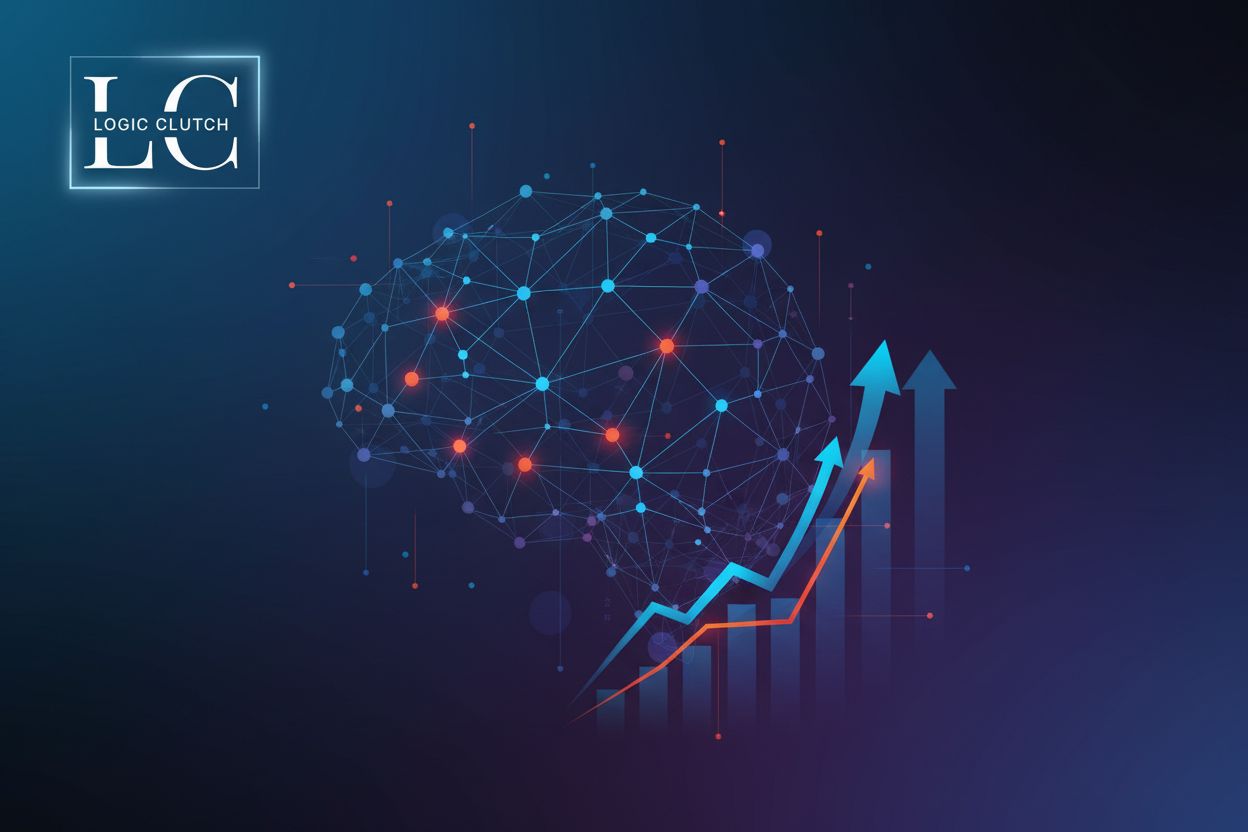Sales Cloud Predictive Analytics Unlock Data-Driven Growth
TL;DR
Understanding Predictive Analytics Fundamentals
Alright, let's dive into predictive analytics – it's not just sci-fi stuff, promise! Ever wonder if you could actually know what your sales numbers will be next quarter? Well, predictive analytics tries to do just that!
Basically, predictive analytics is using data – lots of data – to guess what might happen in the future. It's like looking at past weather patterns to predict if it's gonna rain tomorrow. salesforce.com explains that it uses things like machine learning, stats, and ai to find patterns and make these educated guesses.
It's not perfect, but it's way better than just winging it, right?
Here's the gist:
- It uses past data to predict future outcomes, pretty straightforward.
- It relies on techniques like machine learning and statistical modeling.
- The goal? Help businesses make smarter decisions and improve results.
So, what's under the hood? Well, it's a mix of things like statistical modeling, machine learning algorithms, and data mining. But, and this is a big but, the data needs to be good! If your data's garbage, your predictions will be too. Also, ai is playing a bigger and bigger role by automating stuff and making predictions even smarter.
Predictive analytics can seriously boost your sales game. It can help you:
- Get way better at forecasting sales, no more pulling numbers out of thin air.
- Score leads smarter and focus on the ones that are most likely to close.
- Target customers better by understanding their needs and behaviors.
- Spot risks before they become problems and grab opportunities as they appear.
Think about it – a healthcare provider could use predictive analytics to foresee which patients are at high risk of developing complications, allowing them to intervene early. Or, a retailer might use it to predict demand for certain products, ensuring they're always stocked up on the right stuff.
So that's predictive analytics in a nutshell. It's all about using data to make smarter calls, boosting sales, and staying ahead of the game.
Now, let's get into the nuts and bolts of how this all works with Sales Cloud.
Leveraging Predictive Analytics in Salesforce Sales Cloud
Alright, so you're thinking about using predictive analytics in Sales Cloud? Smart move! Turns out, businesses using data-driven insights are way more likely to crush their goals.
So, how does it actually work, integrating predictive models with Sales Cloud? Well, it's not as scary as it sounds. Think of it like plugging in a fancy calculator. You're basically connecting tools that do fancy math to your sales data.
- First, you gotta choose your predictive analytics tool. There's tons out there, some are easier to use than others. You'll need one that plays nice with Salesforce – meaning it has a pre-built connector or an api you can wrangle.
- Next up, building and training predictive models using your own CRM data. It’s all about feeding your model the right data. This means cleaning up your sales data – getting rid of duplicates, fixing bad entries, and making sure everything’s consistent. The better the data, the better your predictions, simple as that!
- Then, you need to ensure seamless data flow, and this is where things get interesting. You need a way to get data from Sales Cloud to your analytics platform, and back again. This usually involves setting up some kind of integration – either using a pre-built connector or custom api calls.
Okay, let's talk about some actual uses. Predictive analytics isn't just some fancy buzzword, it can do some real cool stuff.
- Predicting lead conversion rates is a big one. Imagine knowing which leads are most likely to turn into customers. A financial services company could use predictive analytics to identify high-potential leads for wealth management services, focusing on factors like income, investment history, and life stage.
- Forecasting sales revenue helps keep ceo's happy. Instead of just guessing, you can use past performance, market trends, and other factors to get a more accurate picture of what's coming down the pike.
- Personalizing customer interactions can make a huge difference. An e-commerce company might use predictive analytics to suggest products based on a customer's browsing history, purchase patterns, and demographics, creating a more engaging and profitable shopping experience.
- Identifying upsell and cross-sell opportunities is like finding money you didn't know you had. Predictive analytics can spot customers who are ready to buy more, or try something new.
Remember, predictive analytics isn't just for huge corporations. Even smaller businesses can get in on the action. For example, a small subscription box service could use predictive analytics to identify customers who are likely to cancel their subscriptions, and then offer them a special discount or bonus to stick around.
Next, we will explore real-world examples and success stories to further illustrate the power of predictive analytics in Sales Cloud.
Practical Applications Driving Sales Performance
Predictive analytics? It's not just about guessing the future; it's about making smarter moves today. Here's how it actually helps drive sales performance.
Using predictive models to score leads based on how likely they are to turn into paying customers is a game-changer. It's like having a crystal ball, but, you know, based on data not magic.
- Imagine a scenario where a software company uses predictive analytics to score leads; focusing on factors like how often they visit the website, what content they download, and what their job title is.
- Then, sales teams can focus on the leads that are most likely to close, instead of wasting time on dead ends.
- Automating lead assignment and routing? That's just icing on the cake, making sure the right leads get to the right sales reps, pronto.
Improving how accurate your sales forecasts are is also pretty important. Predictive models can seriously help with that.
- Think about it: Instead of just guessing what your sales numbers will probably look like, you're using data to get a more accurate picture.
- Identifying potential risks and opportunities in your sales pipeline also becomes way easier.
- If you see a big deal that's at risk of falling through, you can jump in and take action before it's too late, or, if you spot a new opportunity, you can pounce on it before anyone else does.
- Then, you can adjust your sales strategies based on these insights.
Segmenting customers based on what they're predicted to do and what they actually need? Total win.
- Imagine a financial services company that uses predictive analytics to segment customers based on their investment goals and risk tolerance.
- Then, they can tailor their marketing and sales messages to each specific group.
- This can really improve customer engagement and conversion rates, because you're talking to them about what they care about, not just some generic sales pitch.
So, that's how predictive analytics drives sales performance. Next up, we will dive into how to put all of this into practice with real-world examples and success stories.
AI-Powered Predictive Analytics Enhancing Accuracy
Ever wonder if ai could actually make sales predictions better? Turns out, it really can! ai-powered predictive analytics is changing the game, making sales forecasting way more accurate.
So, how does ai make predictive models better? Well, it's all about automation and continuous learning.
- ai can automate data analysis, sifting through massive datasets way faster than any human could. It spots patterns and trends that might be missed otherwise.
- Machine learning is key because it allows the models to constantly improve. The more data ai crunches, the smarter it gets, adjusting predictions on the fly. Think of it like teaching a robot to play chess – it learns from every game.
- ai can also handle unstructured data, like customer feedback from surveys or social media posts. This gives a more complete picture, making predictions more reliable.
Let's say a retail company is using ai to predict demand for winter coats. ai not only analyzes past sales data but also factors in weather forecasts, social media trends, and even economic indicators. This gives a much more accurate forecast than traditional methods that only look at sales history.
Of course, there's ethical stuff to think about, too. Like, making sure the ai isn't biased and that customer data is safe and private.
- Algorithmic bias is a real concern. If the data used to train the ai is skewed, the predictions will be too.
- Data privacy is also crucial. Companies need to be transparent about how they're using customer data and get proper consent.
import pandas as pd
from sklearn.ensemble import IsolationForest
data = pd.read_csv("sales_data.csv")
model = IsolationForest(n_estimators=100, random_state=42)
model.fit(data[['sales']])
Now that you know how ai boosts predictive analytics, let's looks at ai-driven insights and recommendations.
Implementing a Predictive Analytics Program
Is predictive analytics just a passing fad? Nah, it's more like the GPS for your sales strategy – guiding you to where you wanna be, right? Let's get into how to make it work for you.
So, first things first – what exactly do you want to achieve with predictive analytics? Start by clearly defining your goals; think of it as drawing your treasure map.
- Define clear goals and objectives. A software company might wants to predict which customers are most likely to renew their subscriptions.
- Identify and ensure data quality. Financial institutions should examine customer transaction history, credit scores, and demographic data.
- Select the right tools. A retail chain might use ai-powered software to analyze sales data and predict demand for certain products.
- Build and train models. A manufacturing plant could use sensors and historical performance data to predict equipment failures.
- Integrate and monitor. Healthcare providers can integrate predictive models into their patient management systems.
Alright, let's keep it real – ain't nothin' perfect, and implementing predictive analytics has it's own set of headaches. But hey, every problem has a solution, right?
- Data privacy and security are a must. Make sure you're not stepping on any toes with customer data.
- Managing change and getting user adoption can be tricky. Sales teams might be stuck in their old ways, so show them the value.
- Continuously improving and refining models is where the magic happens. The more you tweak, the better your predictions get.
- Establish a data-driven culture. Encourage everyone to trust the data and use it to make calls.
- Ongoing training and support keeps everyone in the loop, and collaboration with it and data science teams is important.
As teramind.co notes, predictive analytics can help forecast sales, predict customer behavior, and optimize marketing campaigns.
Let's look at how businesses can actually put predictive analytics into action to drive sales performance.
A subscription box service could use predictive analytics to identify customers who are likely to cancel their subscriptions. Then, they can offer them a special discount or bonus to stick around.
So, there you have it – your crash course in implementing a predictive analytics program. It's a journey, not a sprint, but the payoff is totally worth it. Now go out there and make some data-driven magic happen!








